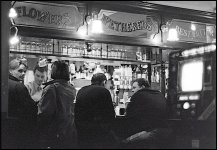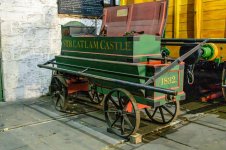- Messages
- 8,088
- Name
- Dave
- Edit My Images
- No
I know this depends on camera, subject, photo use/display, personal pickiness and more, but I'm curious as I often see people moaning about having to use ISOs far higher than I think of as within my normal range! Also the high ISO tests I see are carried out in what I'd class as 'good light', which doesn't give a reflection of how high ISOs behave when it's almost dark
I used to set my upper limit to 10,000, but have stopped worrying about it and turned the limit off. I prefer lower than that but I take what I can get The other day I was up to 51,200 and am happy with the results. After all, I got shots that would have been impossible with film.
I used to set my upper limit to 10,000, but have stopped worrying about it and turned the limit off. I prefer lower than that but I take what I can get The other day I was up to 51,200 and am happy with the results. After all, I got shots that would have been impossible with film.



